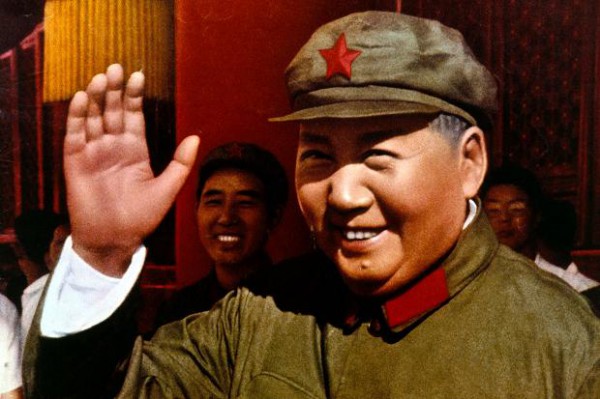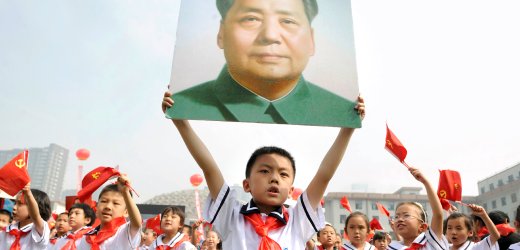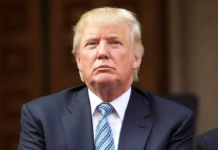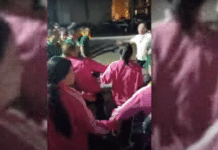What’s behind the growing support for Maoism and other left ideas among young people?
chinaworker.info reporters
There has been a resurgence of left ideologies in China in recent years, despite the regime’s periodic crackdowns on left websites and activists. Some commentators claim Xi Jinping himself is helping to revive Maoism. chinaworker.info spoke to ‘Red Horse’ who has been following these trends.
There is an increased identification with Maoism among young people in China today – what is behind this trend?
Generally there is a resurgence of left ideologies in China since the 1990s, of which the school of Maoism is the largest and dominant one, but also with other different left tendencies and schools, such as Trotskyism, Anarchism, so-called neo-Marxism (Social Democracy), etc.
With the restoration of capitalism and development of neo-liberal policies since the 1980s, Chinese society today is marked by sharp polarisation between the rich and the poor, injustice and repression against working people and vulnerable social groups, and a big discrepancy between the alleged orthodoxy of a ‘socialist country’ and the cruel reality. All these things lead spirited young people to question the current society and seek a left alternative.
This trend has accelerated in recent years. Marx said, “The tradition of all dead generations weighs like a nightmare on the brains of the living.” Given that the 1949 revolution and then Mao Zedong’s Red China brought massive progress in its early period, though likewise it caused mysterious disasters and became the incubator for the restoration of capitalism, it is understandable for some radical layers to choose Maoism up as a weapon to question, challenge, and fight against the current regime and its capitalist model.
Meanwhile, the regime and the ruling Communist Party (CCP) are still using the image of Mao and the word socialism as a ‘red cover’ to shield the capitalist core for their reign and legitimacy.
Xi Jinping has also injected some Maoist ‘style’ into his rule – is this a swing to the left? How is Xi’s ‘Maoism’ seen among the left-leaning youth and Maoist layer?
Although Xi has adopted certain Maoist words and even ‘Marxist’ rhetoric in his speeches, people cannot see any concrete measures signifying a shift to the left, but rather the opposite. Xi and the regime are actually carrying out further so-called ‘reform’ policies, including privatisation of state-owned enterprises (SOEs) such as the railway industry and the petroleum industry, liberalisation of the financial sector and free market for land or land usage rights, and so on.
Some believe that Xi is carrying out a ‘copy’ of the so-called Chongqing model – but without the jailed Bo Xilai. This is because Xi has launched a national campaign against corrupt senior officials, illegal mafia groups, and the sex industry. These campaigns can win some support from certain layers of public and some on the left for a period, but it has nothing to do with left politics. As much of the media observe, Xi is establishing his personal power to replace the former ‘collective oligarchic’ party system.
In his speeches, Xi has often emphasised a connection between Mao’s era and the reform era of Deng Xiaoping, and an interrelation between his nationalistic Chinese dream and the American dream. His ruling method is more likely to be a kind of pragmatic state capitalism.
Bo Xilai – the most prominent CCP leader to be identified with neo-Maoism – is now serving a life sentence in prison. Does Bo have support in society and what is his relationship to the young neo-Maoists?
Bo and his Chongqing model still has some support among a layer of the left. Bo’s Chongqing model was never a ‘socialist model’ but a state capitalist model with some populist propaganda. Even among the Maoists who support Bo there are quite a lot who don’t deny this.
Since the regime did not show enough evidence, convincing evidence, to the public at Bo’s corruption trial, his charisma, and the scandals of other top officials, helped him to win support and sympathy from sections of the left (Maoists) and even from among the masses at large. Thus, his support has actually become relatively stronger now since the pronouncement of his life sentence. The launching of so-called Supreme Constitution Party [by Bo supporters in November 2013] is an example of this. Following the anniversary of Bo Xilai’s arrest [in March 2012] there are some popular articles and video tributes to him online.

There is now a lively debate on social media about the Cultural Revolution of the 1960s-70s – what is behind this?
Since today the ‘communist’ bureaucracy are colluding with capitalists to exploit working people and enjoy enormous wealth and privilege, the situation seems to vindicate the warnings from Mao and rebel factions about “capitalist restoration” and therefore also to justify the Cultural Revolution which they launched. Thus, generally, left youth in China view the Cultural Revolution favourably. Even those sections of the left who do not support Mao and Maoism can support some elements of the Cultural Revolution – as a left populist movement from below.
Meanwhile, the regime and the liberal wing [within and outside the CCP] both dread the idea of chaos and disorder emanating from the masses and from popular movements. To these layers the Cultural Revolution –especially its early stage – is just such an example.
This is why former Premier Wen Jiabao warned of the threat of another Cultural Revolution at his press conference on the occasion of Bo Xilai’s arrest. Many within the liberal wing and the mainstream media hold the view that even a bad order, such as dictatorship by the CCP, is still much better than a movement without any order. So they try to warn against and defame the Cultural Revolution.
In reality, the Chinese regime has never really disclosed the realities of the Cultural Revolution. During the Cultural Revolution conditions close to semi-civil war existed, infighting between rival factions of the CCP bureaucracy, but also repression by the bureaucracy against grassroots rebellions by sections of the masses. After the Cultural Revolution and the 1976 coup, millions of grassroots rebel activists were harshly purged, repressed and imprisoned, as a result of which Deng and the conservative bureaucratic group gained political power and paved the way to restore capitalism.
The CCP regime is cracking down on dissent left and right. Is there any prospect of the liberals, who want democracy but also more ‘free market’ policies, finding common ground with the neo-Maoists in criticising the CCP regime?
There seems to be little common ground between the liberal wing and neo-Maoists on most issues. On one side, liberals in China have strong illusions in Western capitalism, even after the 2008 financial crisis. The most hardcore layer of liberals are strongly against any ideologies linked with communism and socialism. Those left liberals who oppose ‘laissez-faire capitalism’ are merely a minority in China.
On the other side, many Maoists in China blindly and unconditionally defend Mao and his rule from 1949 to 1976. They are deeply sceptical to ‘capitalist democratic rights.’
Furthermore, moderate liberals (reformists) and soft Maoists (so-called ‘reclaim the party section’) have different stances but the same basic approach, namely putting all their hopes in the reform of the CCP. Sure, the reforms envisaged by Maoists and liberals face in opposite directions.
Previously we have heard that a smaller, but still significant, layer of youth are identifying with Trotskyism rather than Maoism. How significant is interest in Trotskyism today – is it increasing or not?
Trotsky and his ideas, Trotskyism, are still not well known to the general public in China, but they are becoming more and more popular among a layer of left youth. This trend can be traced back to the first decade of 21st century.
A layer of young people, numbering at least hundreds up to perhaps thousands, are regularly discussing and studying about Trotskyism online and offline, through discussing groups on baidu.com, douban.com, qq chatting groups,weibo.com and so on.
Most of them had been interested in politics before they converted to Trotskyism, such as Maoism, so-called ‘official socialism’ and liberalism, etc. They support a genuine socialist society with public ownership, workers’ democracy and internationalism.
Some of them also write and translate articles and magazines for various international Trotskyist websites including socialistworld.net and marxists.org. Some of them are also at least partially intervening in workers’ struggles (joining NGOs and making pamphlets/magazines for workers).
In addition, a broader layer of left youth, even some Maoists, are becoming interested in and friendly to Trotskyism. For instance, some young Maoists say that at this stage in China, Maoists and Trotskyists have “80 percent common ground” on various political issues. And the Trotskyists would like to cooperate with Maoists against capitalism while of course adhering to certain key principles.




